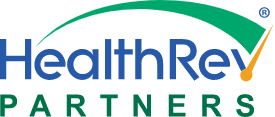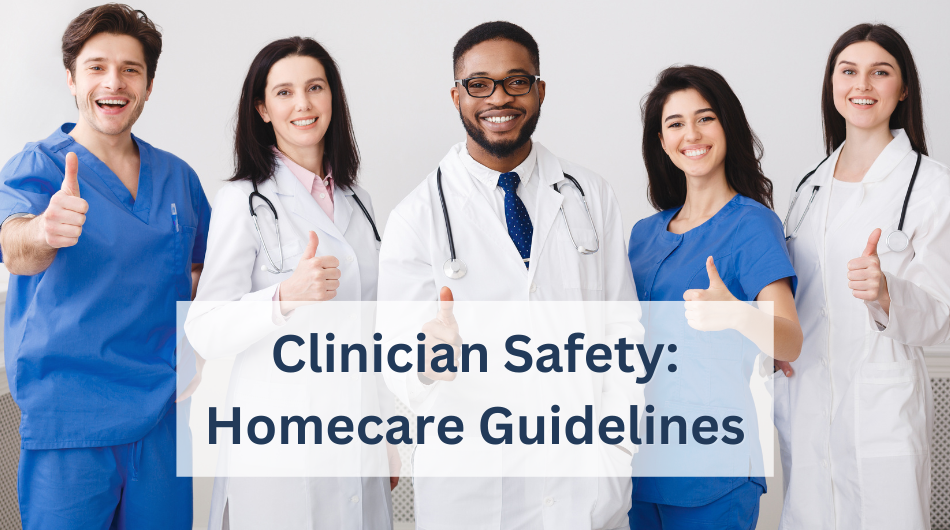Nothing piques interest or raises awareness across the home care industry faster than breaking news of tragedy of a fellow clinician to put the homecare community on edge and cause agencies to take a second look at what safety measures they have in place. Anna Powers, BSN, RN, BCHH-C shares some of her personal stories of being in the field on a Home Health Revealed podcast episode. In this blog, she outlines the rights of the clinicians and the steps an agency can take to ensure the safety of staff in the field.
Since the onset of the pandemic, the healthcare industry is putting more and more focus on treating patients at home. If you factor in the rapid growth of the aging Boomer population, then it is easy to see why the U.S. Bureau of Labor Statistics anticipates home health care employment to skyrocket through 2026 to meet demands. Aside from the possible exposure to blood/airborne pathogens and unhygienic conditions faced when entering some patient homes, homecare clinicians are at risk of potentially serious or even life-threatening hazards. Most of these potential risks stem from the vulnerability of often working alone in unprotected and unpredictable environments and can include anything from a hostile pet in the environment to a high-strung patient caregiver/family member.
Do home health clinicians have rights?
Patient rights and the process for following up on complaints/grievances made against an agency are widely known, but are you aware that agency staff and clinicians have rights as well? According to the Regulations and Interpretive Guidelines for Home Health Agencies, §484.50(d)(5) “if the patient’s (or other persons in the patient’s home) behavior is disruptive, abusive, or uncooperative to the extent that delivery of care to the patient or the ability of the HHA to operate effectively is seriously impaired”. The HHA may proceed with steps to discharge the patient from care.
Which types of behaviors should cause risk concern?
The interpretive guidelines break the guidance down even further by explaining that “disruptive, abusive behavior includes verbal, non-verbal or physical threats, sexual harassment, or any incident in which agency staff feel threatened or unsafe, resulting in a serious impediment to the agency’s ability to operate safely and effectively in the delivery of care.” They also define uncooperative “as the patient’s repeated declination of services or persistent obstructive, hostile or contrary attitudes to agency caregivers that are counterproductive to the plan of care”.
Let me be clear, I am not referring to risks related to fall hazards, overexertion, auto accidents, or a bed bug infestation. I am referring to safety concerns related to negative behavior from patients, caregivers, and people in the patient’s immediate community that put the clinician at risk of psychological or physical harm. Since clinicians have no access to the past medical history of others in the home, or knowledge of their psychological history, there really is no way to know what situation they may be facing on the other side of the patient’s front door, and that’s a really scary thought when you stop to consider the endless possibilities.
What is considered an immediate danger?
The next question that I know many of you are wondering is what is considered an immediate danger? From personal experience, I recommend taking ANY perception of danger into consideration before proceeding or expecting a clinician to enter a home.
There is no substitution for trusting your gut!
As a former field clinician, I can attest that there is a feeling you get when you walk into a home, and something just isn’t right. Some may call it a nurse’s intuition, but the feeling is real, and those feelings almost always pan out to have some degree of validity at some point. Agency leadership have the obligation to communicate to their staff that threatening behavior is not ok and does have to be tolerated. Just like we advocate for patients, we must also advocate for our staff.
What does an agency do when a clinician comes forward to report that they make a visit to a particular patient’s home and encounter an unsafe situation?
1. The correct action is to leave the situation
Clinicians must be empowered to leave an unsafe situation. Have protocol in place within your agency that gives clinician’s the ability to quickly assess and make a decision to leave.
2. Start the process of discharging this patient from their care.
If the patient has not yet been admitted, then this would certainly warrant reconsidering whether this patient is appropriate for admission.
3. Attempt to Resolve
According to the interpretive guidelines, “the HHA must document in the patient’s clinical record the behaviors and circumstances that warranted patient discharge for cause as well as the HHA’s efforts to resolve the problems.” Unless there is an immediate danger posed that justifies not returning to the patient’s home ever again, the agency must attempt to resolve the concern.Consider your options: Attempts should be made to reach out to the patient/caregiver and request a change in behavior. If the behavior continues, then the agency can choose to document attempts made to correct the issue, notify the MD, provide notice of discharge, and never return to the home.It is also important to know that it is perfectly acceptable to call a referral source and ask that discharge be delayed a few hours so that you aren’t having to send a clinician out into the field at 1 AM to start an IV for home infusion.
4. Be proactive
There are GPS trackers and companies available that offer clinician monitoring services designed to allow clinicians to trigger a personal alarm by simply pulling a tether, which alerts 911 for immediate response. Sometimes just the visible signs of a monitoring system can deter would-be aggressors and prevent escalations from happening.
Safety can be that simple.
Clinician safety must be in the front of the line as a concern that needs to be openly discussed and addressed. I encourage everyone in the homecare industry to revisit the guidelines and encourage open dialogue in your agencies. Prevention and education are vital to keeping your greatest investment safe as they go out into the field to serve others.


